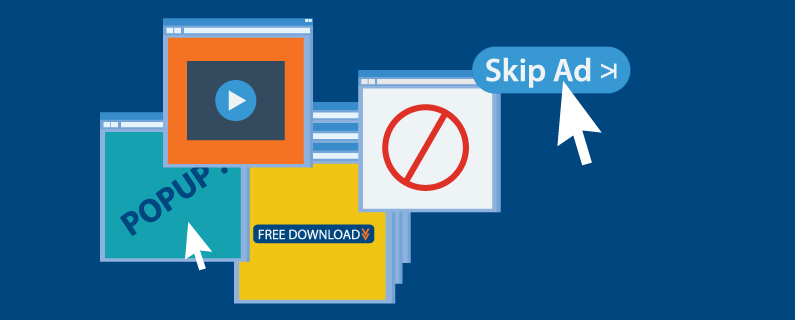
Pop-up ads are super annoying. You just want to read the article or see what everyone was talking about and there’s this big thing in your face that has the audacity to ask something from you. Probably contact information to send stuff to your already bursting inbox. I’ve never met a pop-up I didn’t dislike.
And yet, they work. 20-70% of viewers offer contact information in response to a pop-up. (Who are these people, and how do we get them to stop?)
If you find yourself peeking into Google searches to see how to get some pop-up-ad goodness for yourself, here are some guidelines to garner coveted conversion rather than viewers swatting your pop-up away like a pesky insect.
Make sure your content is relevant.
The cool thing about pop-ups is if you do them right, they’re a brilliant marketing tool. Step number one is making the pop-up is directly relevant. The examples are no-brainer: if you put a pop-up on your blog, offer a free e-book that gives a deeper look at what your viewer was already reading about. If a viewer is about to leave your e-commerce site, show them a discount coupon if they give you their email. You’re inching them further down the rabbit hole or making their purchase decision easier, all while getting something in return.
Timing is everything.
There’s quite a few labels given to people my age, including “millennials” and “digital natives,” as if we were born on bytes and take naps on the cloud. However, my experience with pop-ups is different from someone who is still learning how the Internet works and may only open a browser once a day. Regardless of your target audience, timing your pop-up is crucial.
Never, I repeat never, have a pop-up engage as soon as a page loads. Not only do immediate pop-ups have poor conversion rates, they discredit your authority because of the spammy aftertaste. At the very least it will be ignored as a roadblock to desired content, and at worse, the viewer will automatically exit the page that’s asking something from them before they know who you are. Just don’t.
So, given the ad is relevant, when should a pop-up happen? I found three options that made the most sense to me.
Scroll pop-up.
This one hits the sweet spot of an engaged user who is more likely to give you information. A scroll pop-up is engaged when a viewer is looking at your page, wants to see more and is activated at a certain point. I’ve read they should be timed for about half-way down the page, when your viewer is already engaged and won’t be as annoyed that the content is blocked.
Timed pop-up.
If you shouldn’t ever have an entry pop-up, I feel like the timed pop-up is its cousin: slightly more palatable but still not optimal. A timed pop-up waits for the viewer to be on a page for any number of given seconds before launching. From my perspective, this takes the control out of the viewer’s hands and assumes they’ve already consumed enough content to be engaged/not as annoyed. Is it a bit of a teaser, showing the page and then blocking it with an ad? Sure, but the baseline problem is your ad still stands in between the viewer and the desired content. If you use a timed pop-up, make sure you give your user a few seconds to get the general gist of things.
Exit pop-up.
The exit pop-up is playing the sympathy card. Are you sure you want to leave? Please don’t leave us. If your content did its job and interested the viewer, the exit pop-up is perfect. “Would you like more of this here fine content? Don’t mind if I do!”
As with the other pop-up ads, tone and timing are important. I’ve seen many pop-ups trying to be clever and shaming me into clicking the button they want. (Yes, please sign me up for magical updates vs. no, I want to ruin my life.) They must work for some people, but to me, it’s transparent that a company is trying to con me into doing the thing I don’t want to do, so they’re just giving me another reason to say no.
There are also pop-ups that trigger when my mouse hovers anywhere not on the open browser window. Again, it must work on some people, but even if I had no intention of leaving, the pop-up gives me my sign.
Give them an option to opt out.
This is the most important part of pop-up ads: an “x” button or a “no thanks” button. If for whatever reason your pop-up bot has a bug and requires the viewer to comply, your site and business will appear super spammy and your viewer is gone. Make sure they don’t have to provide information or do anything they don’t want to continue viewing your site.
Clearly, pop-ups keep happening so they must work. If you choose to employ these seemingly necessarily devious conversion tools, proceed with caution.
